by Peter Robinson
Peter Davis, the American designer who helped create one of the most controversially styled cars of the past 50 years, was guest speaker at the AMHF earlier in the year.
Briefly, Peter’s career as a car designer began at Opel in 1983, before a move to Fiat in 1989. Later he rejoined GM in Detroit and, following GM’s 2009 bankruptcy, moved to design education. Davis names two cars as the favourite designs he was intimately involved with: Fiat’s Barchetta sports car and the brilliant Multipla. Very sadly, neither was built in right-hand drive so they were never sold in Australia, though a few private imports sneaked in.
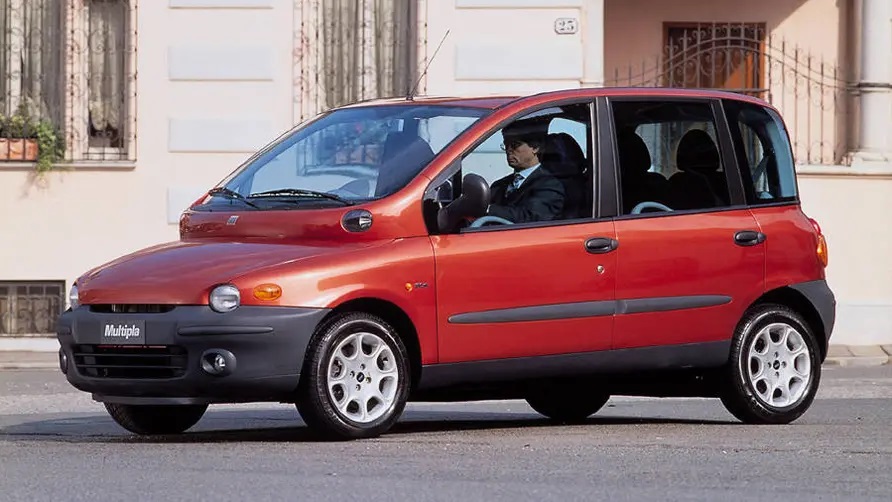
Fiat’s Multipla – was it pure ugly or pure genius? – was invented to bypass a deal Fiat had with PSA (Citroen- Peugeot). The Italians agreed not to build a six-seat MPV any longer than 4-metres. Davis, head of Fiat design when the Multipla was created, explained the, until now, corporate secret: the joint MPV deal that led to the Fiat Ulysse, Lancia Zeta, Peugeot 806 and Citroen Evasion, included a clause that prevented Fiat from developing a six or more-seater MPV….unless it was under 4-metres long.
Fiat’s designers, keen to build a small MPV, were challenged by CEO Paolo Cantarella to create the almost impossible: a vehicle of under four metres length, yet capable of seating six people and carrying their luggage. After a 2+2+2 layout was rejected as not being feasible within the 4-metre limitation – the initial proposal created a narrow, tall vehicle with a compact nose and tiny boot – Fiat opted for a wider and lower car.
The result was the 3994mm long Multipla, a 3×3 seating arrangement, a big boot, excellent visibility – the door sill was so low it became the armrest – and space-frame construction.
A masterpiece of automotive industrial design, Peter admitted the Multipla was a commercial failure. Fiat hoped to sell 90,000 a year and did so in the first 12 months, but despite positive reviews – Top Gear magazine named it Car of the Year in 2000 – sales outside Italy never reached the targets, undoubtedly because of its infamous styling. This led quickly to a facelift of the front end, but the more conventional styling did nothing to improve sales.
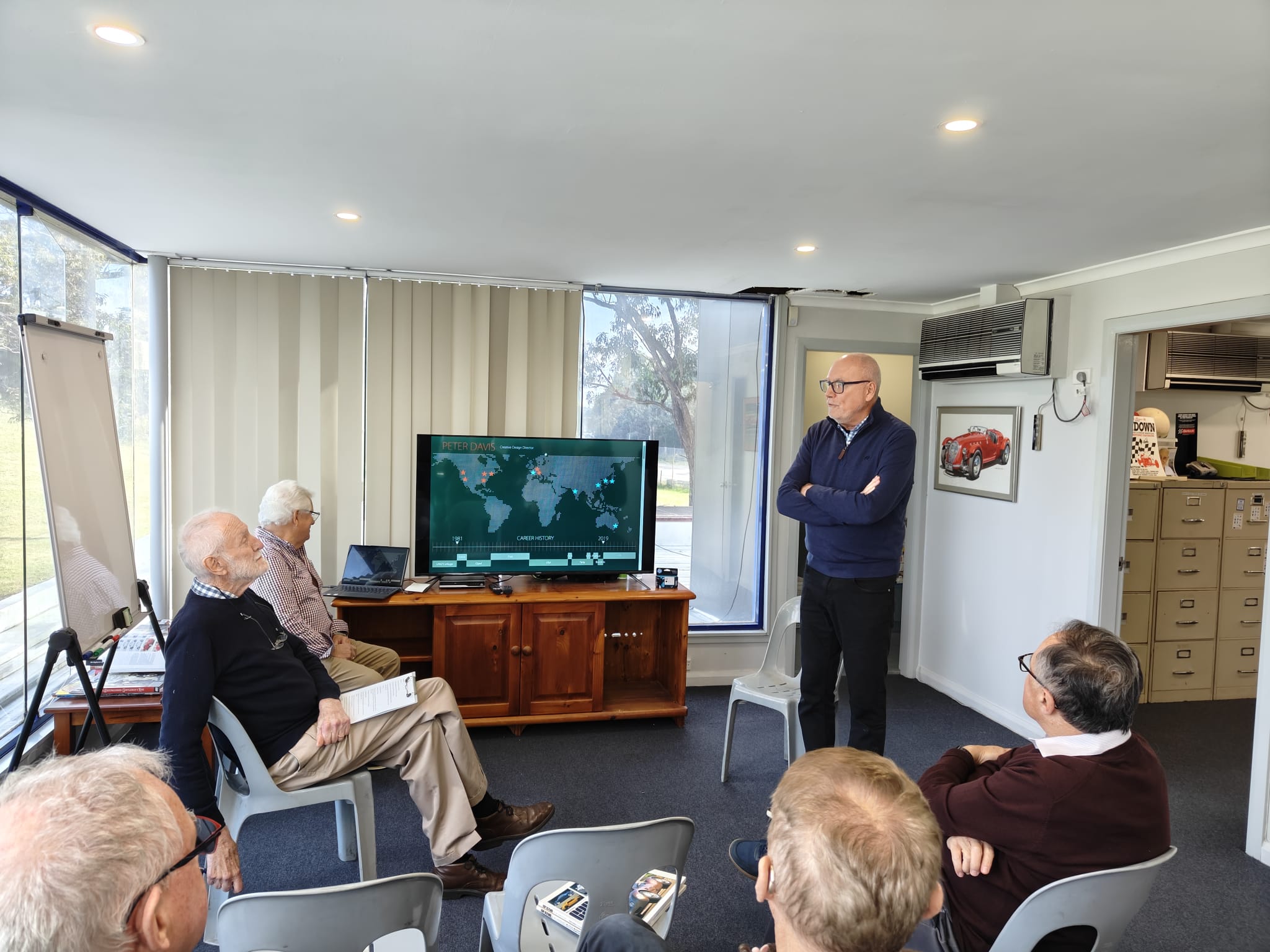
Davis, born in 1956, grew up in Vermont, a keen motoring enthusiast who also liked to draw and not just cars. It was only when a lecturer at the University of Vermont suggested he was better suited to industrial design – ie. car design – rather than the Fine Arts degree he was two years into, that he discovered there was such a thing as designing cars. Included among the catalogues in the university’s library was a brochure for the Pasadena Art College of Design, then the world’s most famous car design school. This, Peter immediately realised, was exactly the opportunity and career for him.
Rather than drive his VW Beetle across the country, Peter flew to Los Angeles in 1977, meeting Chris Bangle (who rose to become BMW’s head of design between 1992-2009) on his first day in Pasadena. Other students during Davis’s time at the Art College included J Mays (Ford’s boss of design 1997-2013), Tom Peters (GM), Mark Jordan (Mazda) and Jeff Teague.
“I realised that I was more interested in the interiors rather than exteriors,” Peter told us. “I liked the problem-solving aspect of interiors.”
Peter graduated in 1981, a time when American car companies were not hiring designers, and worked for DWA, an industrial design firm in Atlanta, on computer terminals. He also helped create the Bell Telephone Museum, but remained keen to join one of the Detroit Big Three, despite admitting to disliking what was coming out of Detroit at the time. Meanwhile, his mate Bangle had joined Opel and Peter was keen to work with his friend. Sure enough, with Bangle’s help he moved to Opel and Frankfurt, working on the interiors of the Opel Omega (soon to be the Holden Commodore VN), Vectra and Corsa. One of his first tasks was designing a new exterior mirror remote control that eventually spread across most of GM’s models and was made by the 10s of millions.
It was in Frankfurt that Peter met and married Jill, his Scottish wife. They frequently holidayed in Italy and grew to love the country, so when Bangle moved to Fiat in 1985, Peter was keen to follow his mate. To be paid a reasonable wage, Chris told Peter he needed to be offered a position at Centro Stile as a dirigente (manager), rather than an operaio (worker). This came to pass and in 1989 the Davises moved to Turin.
During the development of the Punto, Fiat’s replacement for the aging Uno, Fiat planned a cabriolet. One Saturday in February 1991, Cantarella very deliberately turned up in his Alfa Romeo Giulietta Spider and asked the question: Why don’t we try a spider on the Punto platform?”
Nevio de Giusto, head of Centro Stile, had been in the chair for just a month. Already the Tipo-based Coupe was a goer and now brave Fiat was exploring one stimulating model after another. Cantarella saw the sports car as an ingenious way of evaluating how much confidence he could place in Fiat’s own rapidly expanding design department. He also insisted that while the roadster was to be an image car for Fiat, it also had to be profitable. Eventually, Fiat chose Greek designer Andreas Zapatinas’s proposal with Davis responsible for the interior.
The Barchetta, deserved and got a terrific interior that was pure sports car, despite its Punto origins. Originally, Peter wanted to stretch the body colour through to cover the dashboard and circle the cockpit, creating the impression that the windscreen, with its black pillars was almost surplus to the body and could be removed. But safety concerns with reflections meant moving the black dash cover closer to the screen. By lengthening the steering column, the Punto bulkhead was maintained and, although it had a unique windscreen, the cabrio’s strengthened structure and pillars were retained.
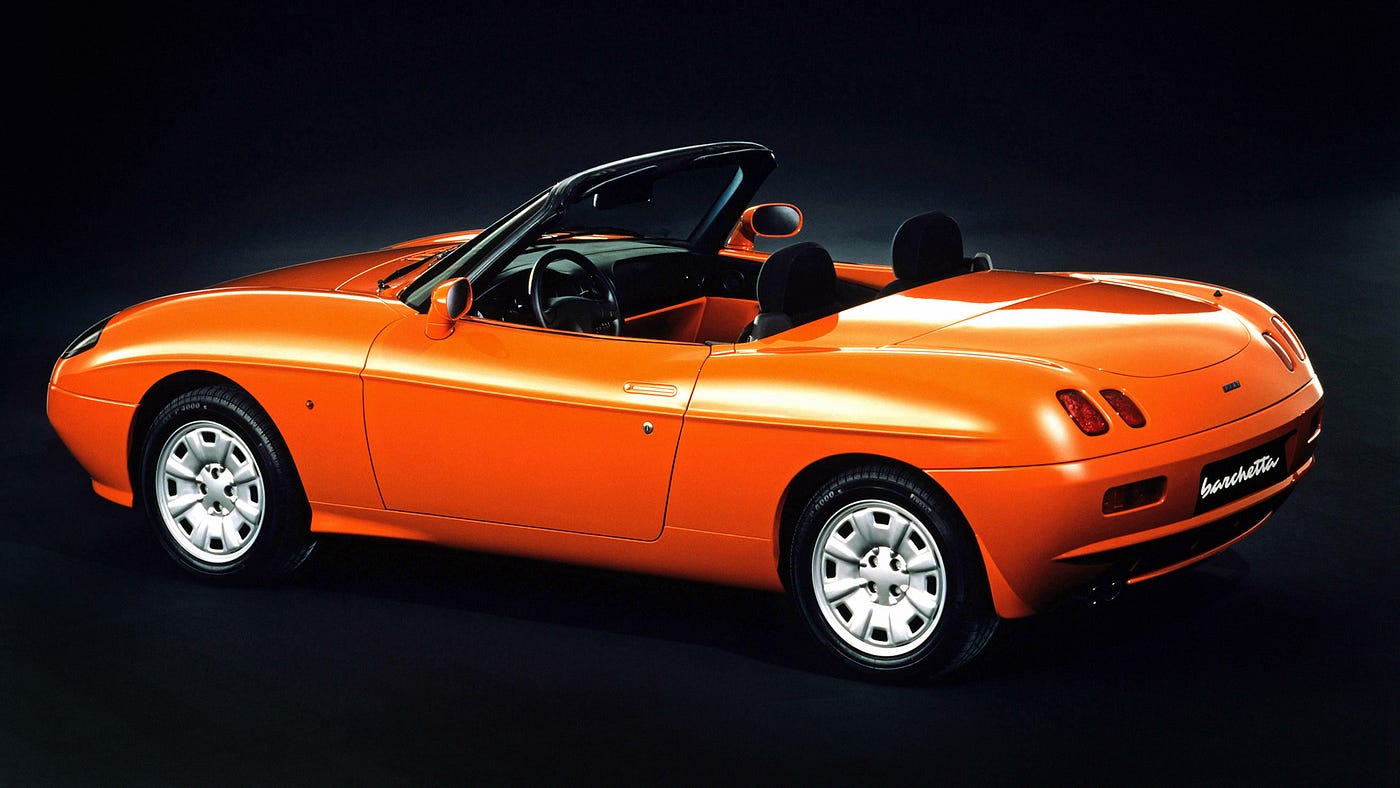

By March 1992, the design was finalised and formerly frozen in July, the same year, just months before Bangle quit, leaving the task of shepherding the Barchetta to production with Davis and di Giusto.
Peter told me at the time, “There’s a real continuity in the lines of the Barchetta that support all its many forms. I think it absolutely reflects the Italian culture. The MX-5 pricked Italian egos: we’ve proved we can do a European sports car.”
Davis so loved the Barchetta he bought one. Sadly, the little sports car was only built in left-hand drive across its 1995 to 2005 production run of 57,700 cars.
When Fiat, then Europe’s most creative car maker, came up with the idea of a small six-seat MPV, the result was radical, in both design and engineering and a true automotive revolution.
“There were no constraints in the design, only the size and the cost,” We cleared the decks of all preconceptions,” Cantarella told me at the launch of the near production-ready concept version in 1998.
Davis explained the thinking to the AMHF audience, “We decided to push out the width, keep the waistline as low as on a conventional hatchback and retain the two-box profile, with the bonnet the same height as the Punto to permit a deep but relatively upright windscreen. We had hoped to mount all the lights (low beam, high beam and fog) in the vertical plain below the screen but research showed that such a setup impaired visibility at night and in the rain. So only the high beams remained just below the windscreen.”
The extra width (it was 1870mm wide when most rivals were around 1700-1750mm) allowed the fitting of two rows of three bucket seats and a boot capacity of 500-litres. The central front seat incorporated built-in safety belts for the middle bucket which was set back slightly to allow easy gear changing. Or, the seat could be removed and replaced by a table, a bespoke child seat or even a small refrigerator. The very deep side glass was almost vertical, so much so that from some angles it looked as if the car was wider at the roof than the waistline. So wide for Italy’s many narrow lanes, the designers added small plastic extensions to the door handles so they became the car’s widest point and the first point of contact with any passing car or wall.
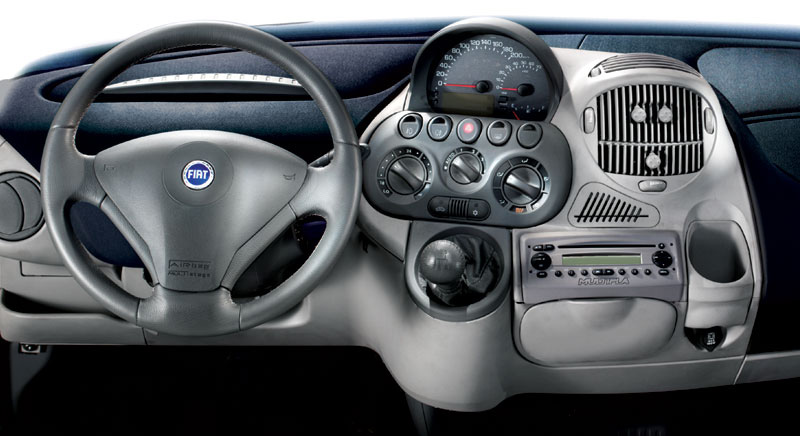
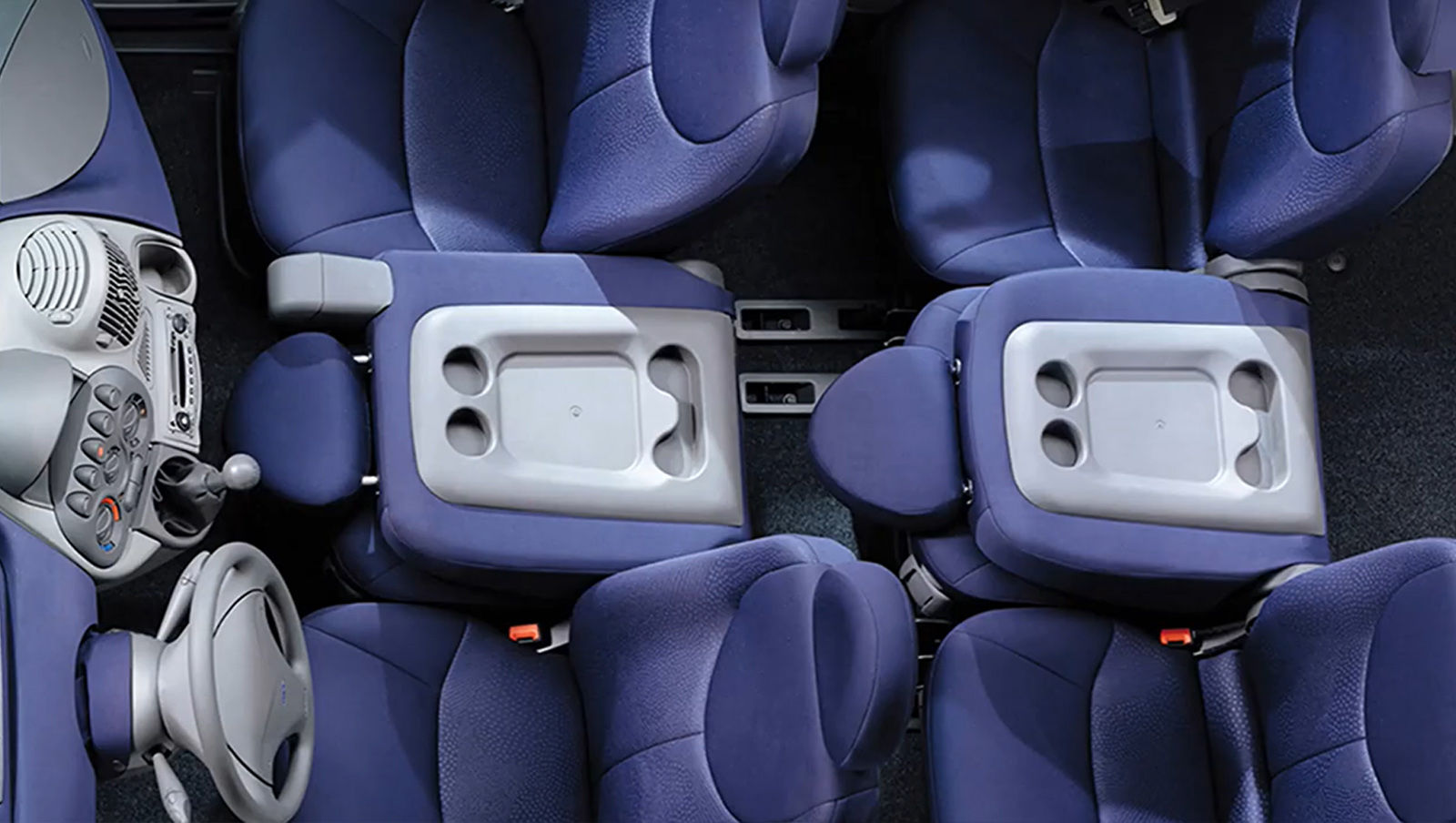
Asymmetrical instruments and control panel included the dashboard mounted gearchange – the shift was short and precise – the design forced a move away from a conventional platform and led to the creation of a steel spaceframe constructed in sections with the body both welded and bolted to the spaceframe. Fiat claimed this method was half the cost of a steel monocoque body.
From my experience – and I drove a Multipla from northern Italy to the UK and return with two grandchildren and Erica, my wife, plus all our luggage – Fiat’s daringly different vehicle proved the perfect travelling companion. I even came to appreciate the styling. Peter and I agree the Multipla was the 1990s most rational car.
Davis left Fiat to join General Motors in 2000. At the time, GM was interested in establishing an Italian studio, ideally in Milan and headed by Peter, with the aim of better understanding contemporary fabrics, colours and materials. Plans changed and the Davises moved to Detroit.
Says Davis, “In late 2001, I was tasked with proposing better shared/common solutions for steering wheels, radios, door openers, and every other repeatable interior component. We benchmarked Toyota and VW extensively.
“My first trip to Melbourne was to discuss with senior Holden designer Andrew Smith any common component sharing GM North America could gain from the work he was doing on the Commodore VE program. We were mostly interested in neutral parts that could easily go in any of GM’s brands, like overhead console systems, grab handles, and switches and controls.
“Our meetings showed us how amazingly similar our strategies were and validated our thinking. The VE interiors were better designed than GM North America parts and pieces. I think this was mostly due to Holden being so much smaller and the various engineering and other partners working much better together.
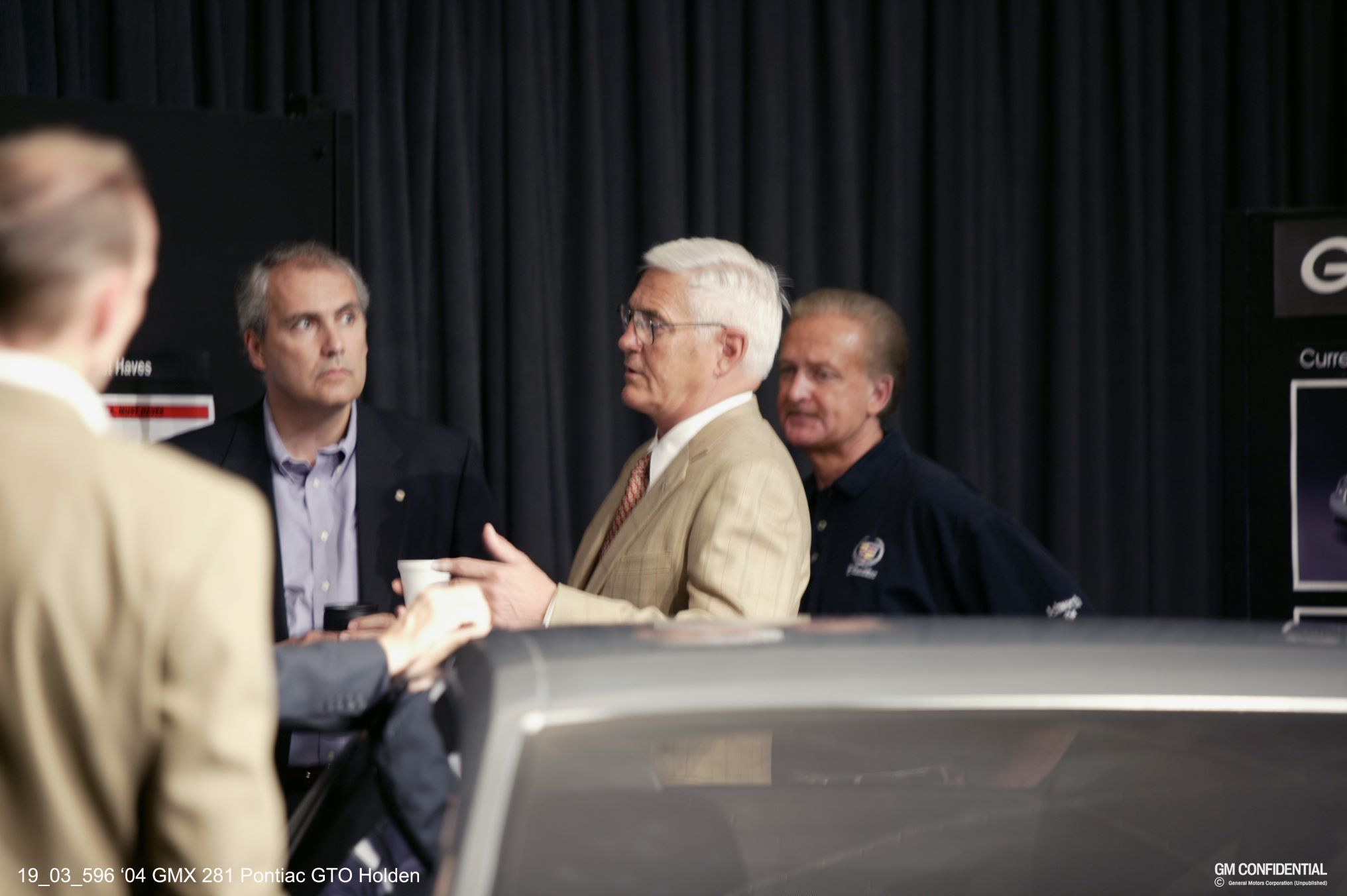
“When Bob Lutz came to GM in late 2001, he understood that GM NA interiors were uncompetitive and a lower priority in the design organization and wanted dedicated studios for interiors. I became a studio design director responsible for International Joint Venture projects, and eventually performance and prestige vehicles, including Holden. GM planned four programs based on the Zeta/VE platform:
– A Chevy coupe (replacement for the Camaro, but it couldn’t be called Camaro if not built in Canada)
– A Buick convertible (Velite concept)
– A Buick long wheelbase sedan (WM)
– A Pontiac four door sports sedan (G8)
“There was also a great looking RWD Chevy Impala in the works, but I was not involved in that.
“Sadly, the effort fizzled when higher future CAFE standards were set by the US government, and the high number of RWD projects planned were deemed unlikely to meet the targets, except for the G8 and later the Camaro.”
Peter then worked on interiors for various GM products including Cadillacs, Pontiacs, Chevies, Buicks, Saturn, GMC and Suzuki.
Davis was among the thousands of employees made redundant when, after years of huge losses, GM filed for bankruptcy in 2009. He then worked briefly for Detroit’s College for Creative Studies before joining Tata, the giant Indian company. He then had a brief period with Bordrin, a Chinese EV startup which went broke in 2016.
In 2019, Peter was head hunted to the Lawrence Technological University and asked to co-direct (with Elizabeth Wetzel) the Transportation Design Program.
“We were asked to teach three classes and revamp the curriculum,” says Peter, “bringing it up to date and competitive with other design schools: an amazing learning experience.
“We brought back GM and Stellantis design to seriously consider sponsoring projects and hiring our students. In 2022 GM hired six out of 10 of our seniors.”
Yet, the program enrolment for freshmen couldn’t achieve more than six or eight incoming students, so it was discontinued after 2023.
“I was asked by The College for Creative Studies (CCS) to teach a senior studio class sponsored by Honda in 2023, and in 2024 a sophomore class about various forms for mobility solutions as a system.”
His greatest automotive love: an Alfa Romeo Bertone 1750 2.0. “Actually, I’m an alfisto.”
Today the family garage comprises Peter’s 1961 Cadillac Eldorado Biarritz convertible, a Honda SUV and Jill’s Mini Cooper.
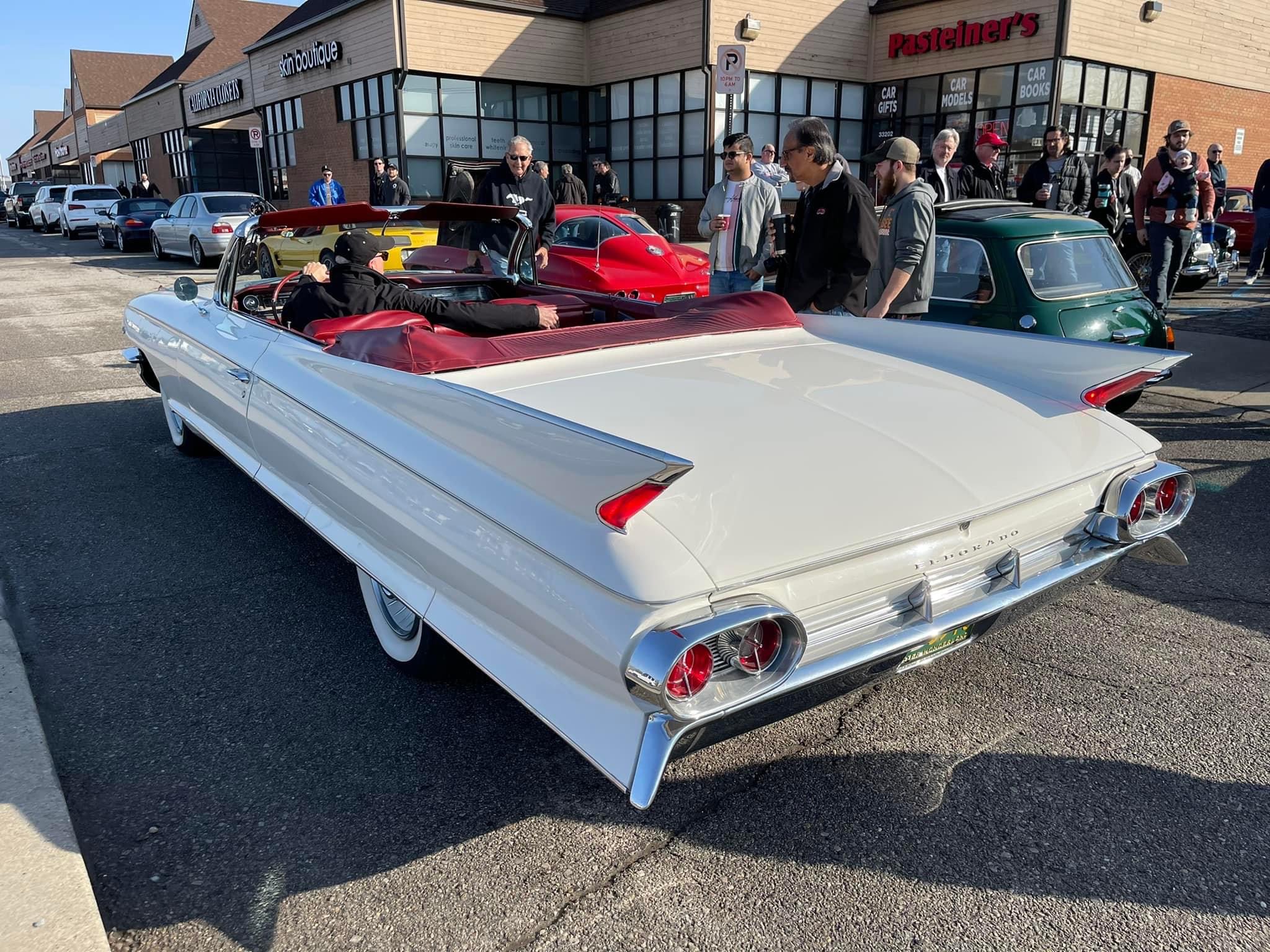

The AMHF volunteers present for Peter’s talk found it fascinating. Most had not given any thought to car interior design so it was all new. “Revelatory” was one comment.

